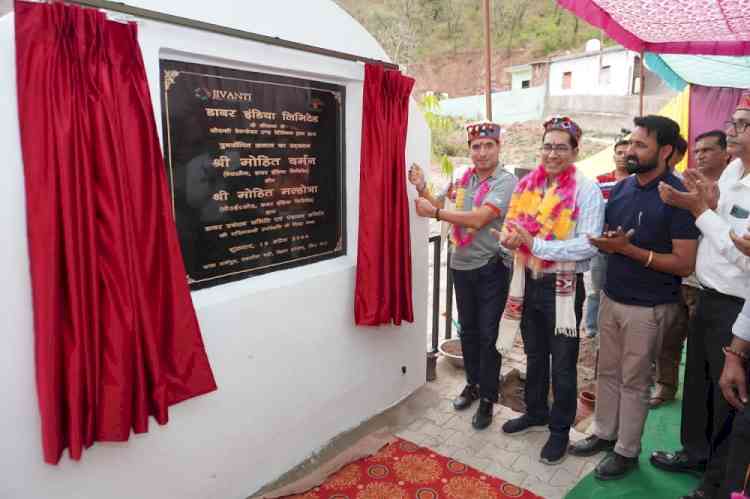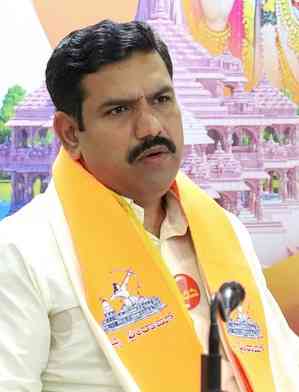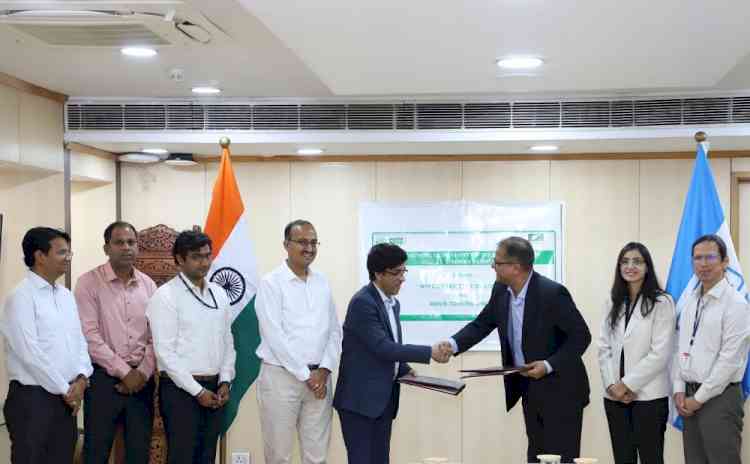Lack of awareness on Osteoporosis in Children: Fortis Hospital Ludhiana
Author(s): City Air Newsphoto: city air news Ludhiana, October 21, 2016: On the eve of World Osteoporosis Day Awareness event was organized by Fortis Hospital Ludhiana. The event was organised under the supervision of Mr Vivan Singh Gill,...


photo: city air news
Ludhiana, October 21, 2016: On the eve of World Osteoporosis Day Awareness event was organized by Fortis Hospital Ludhiana. The event was organised under the supervision of Mr Vivan Singh Gill, Director, Fortis Hospital Ludhiana. Mr. Gill said, Osteoporosis, the disease that causes bones to become less dense and more prone to fractures, has been called “a pediatric disease with geriatric consequences,” because the bone mass attained in childhood and adolescence is an important determinant of lifelong skeletal health. The health habits your kids are forming now can make, or literally break, their bones as they age.
Giving more information Dr. Sanjeev Mahajan, Director & Head Orthopaedics Department, Fortis Hospital Ludhiana said, typically, when parents think about their children's health, they don't think about their bones. But building healthy bones by adopting healthy nutritional and lifestyle habits in childhood is very important to help prevent osteoporosis and fractures later in life.
Osteoporosis, the disease that causes bones to become less dense and prone to fractures, has been called "a paediatric disease with geriatric consequences," because the bone mass attained in childhood and adolescence is a very important determinant of lifelong skeletal health. The health habits your kids are forming now can make--or literally, break--their bones as they age.
Childhood such an important time for bone development.... Bones are the framework for your child's growing body. Bones are living tissue that changes constantly, with bits of old bone being removed and replaced by new bone. You can think of bone as a bank account, where (with your help) your kids make "deposits" and "withdrawals" of bone tissue. During childhood and adolescence, much more bone is deposited than withdrawn as the skeleton grows in both size and density.
The amount of bone tissue in the skeleton (known as bone mass) can continue to increase until your child reaches his/her mid-20s. At that point, bones have reached their maximum strength and density, or peak bone mass. Up to 90 percent of peak bone mass is acquired by age 18 in girls and age 20 in boys, which makes youth the best time for your kids to "invest" in their bone health.Building your children's "bone bank" account is a lot like saving for their education: the more they can put away when they're young, the longer it will last as they get older.
Giving information regarding Nutrition and Osteoporosis Dietician Sumita SrivastavaIn this article said, the most important nutrients for fighting osteoporosis are calcium and vitamin D.
Daily Requirements of Calcium
• Young children 1-3 years old should get 700 milligrams (mg) of calcium a day.
• Children 4-8 years old should get 1,000 mg per day.
• Teenagers should get 1,300 mg of calcium a day.
We should be getting 800 to 1,200 IU of vitamin D per day. This is particularly important, because the primary source of natural vitamin D -- exposure to sunlight -- carries the potential risk of skin cancer. As more of us slather on sunscreen and stay in the shade, we need to make sure we get enough vitamin D from other sources.
To find out how much vitamin D you personally need, consider a blood test for vitamin D (25-hydroxy vitamin D) from your doctor. It measures how much vitamin D is in your body. Experts think that vitamin D may do more to protect you from osteoporosis than only helping you absorb calcium.

 cityairnews
cityairnews 















